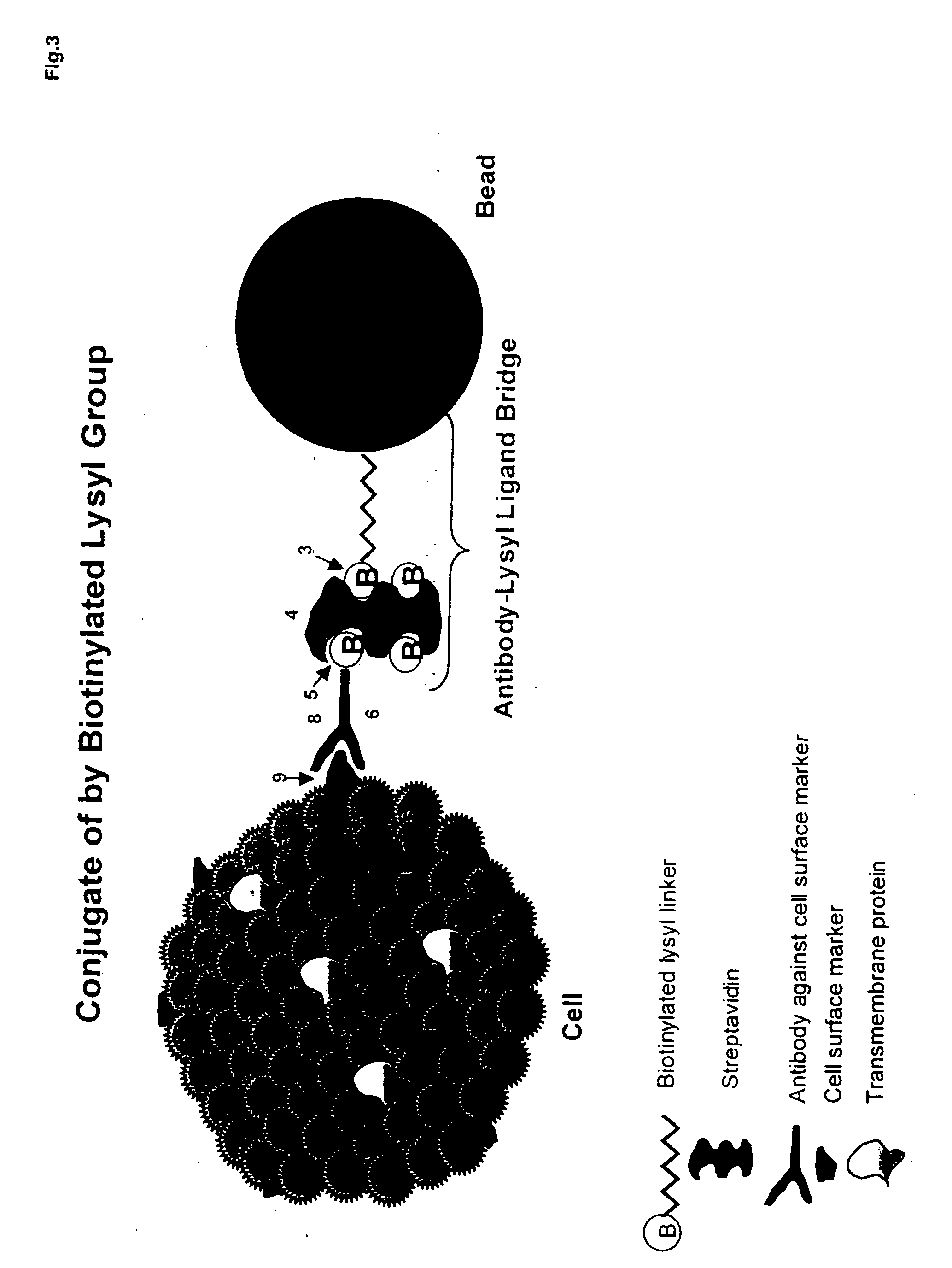Biodegradable polymer-ligand conjugates and their uses in isolation of cellular subpolulations and in cryopreservation, culture and transplantation of cells
a biodegradable polymer and conjugate technology, applied in the field of medical devices, can solve the problems of inability to easily use clinical therapies, mass cell culture, bioreactors that might be used clinically or industrially, and inability to easily define, etc., to achieve the effect of facilitating cryopreservation and storage conditions of adherent cell types
- Summary
- Abstract
- Description
- Claims
- Application Information
AI Technical Summary
Problems solved by technology
Method used
Image
Examples
Embodiment Construction
[0016] The present invention relates to a composition having a biodegradable polymer covalently conjugated to a receptive group or ligand. Moreover, the invention relates to this composition in further combination with a cell. The cell can be anchored to the receptive ligand or group. The receptive ligand or group can be an antibody or antibody fragment against a cell surface antigen or receptor, an avidin, a streptavidin, or a biotin moiety. The composition can further comprise one or more components of extra cellular matrix, e.g. collagen, fibronectin, laminin, or combinations thereof. The invention also relates to methods of use of such a composition for selection and isolation of populations of cells, cryopreservation of the cell particle combination, and cell culture of anchorage-dependent cells.
[0017] Definitions
[0018] Serum-free, hormonally defined medium for diploid cells (HDM-diploid cells). This medium has been found to elicit clonogenic expansion, colony formation or co...
PUM
| Property | Measurement | Unit |
|---|---|---|
| density | aaaaa | aaaaa |
| time | aaaaa | aaaaa |
| size | aaaaa | aaaaa |
Abstract
Description
Claims
Application Information
 Login to View More
Login to View More - R&D
- Intellectual Property
- Life Sciences
- Materials
- Tech Scout
- Unparalleled Data Quality
- Higher Quality Content
- 60% Fewer Hallucinations
Browse by: Latest US Patents, China's latest patents, Technical Efficacy Thesaurus, Application Domain, Technology Topic, Popular Technical Reports.
© 2025 PatSnap. All rights reserved.Legal|Privacy policy|Modern Slavery Act Transparency Statement|Sitemap|About US| Contact US: help@patsnap.com



